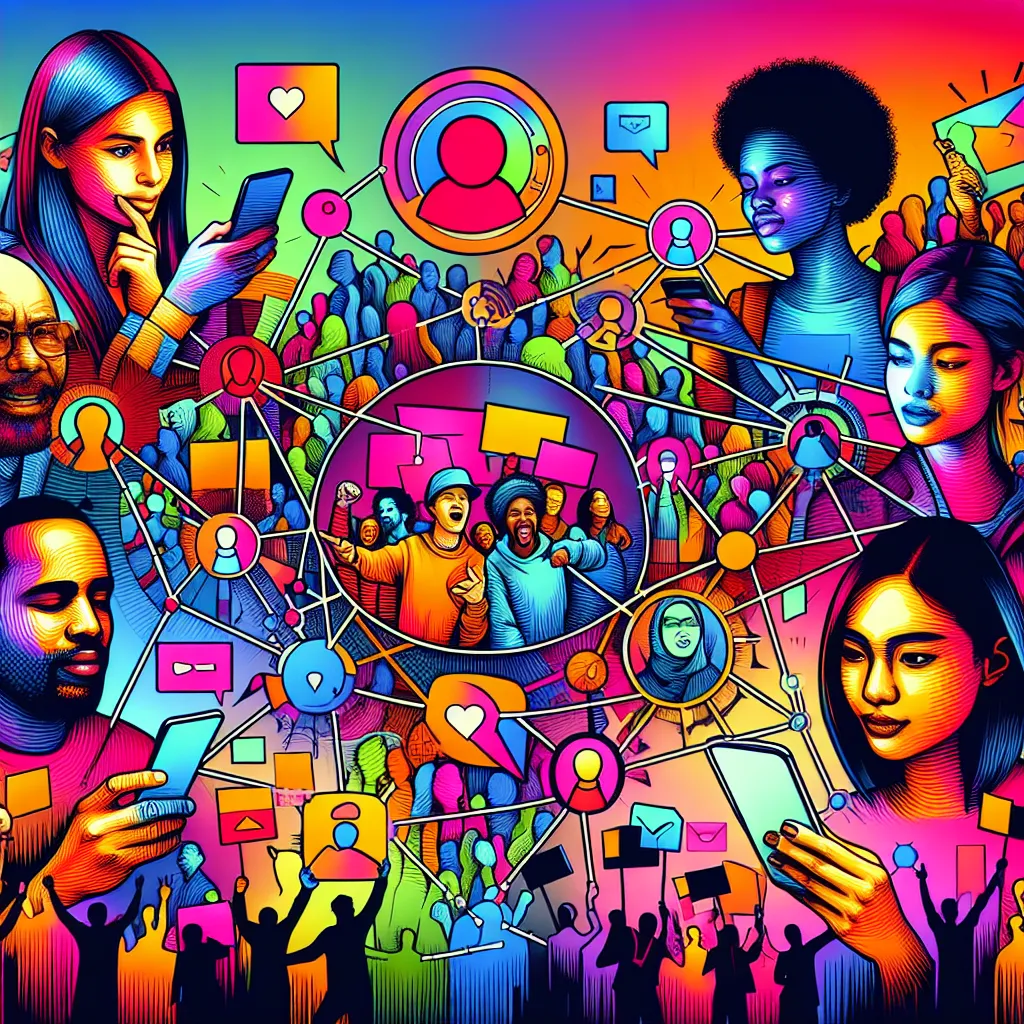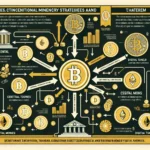The IELTS Reading section is a crucial component of the test, requiring candidates to demonstrate their ability to comprehend complex texts and extract specific information. Today, we’ll focus on a topic that has gained significant traction in recent years: “Social media’s role in grassroots movements.” This subject has appeared in various forms in past IELTS exams and continues to be relevant in our increasingly digital world. Given its contemporary nature and the frequency with which it has been featured, there’s a high likelihood that similar themes may resurface in future tests.
 Social media and grassroots movements
Social media and grassroots movements
Practice Reading Passage
Social Media: The New Frontier of Grassroots Activism
In the digital age, social media platforms have emerged as powerful tools for grassroots movements, fundamentally altering the landscape of social and political activism. These online networks have democratized information dissemination, allowing individuals and groups to bypass traditional gatekeepers and reach vast audiences instantly. From the Arab Spring to the #BlackLivesMatter movement, social media has played a pivotal role in organizing protests, raising awareness, and mobilizing supporters on a scale previously unimaginable.
One of the most significant advantages of social media in grassroots activism is its ability to create a sense of community among geographically dispersed individuals who share common goals. Platforms like Facebook and Twitter enable activists to form virtual communities, share experiences, and coordinate actions across vast distances. This interconnectedness has given rise to what some scholars term “networked social movements,” characterized by their decentralized structure and rapid mobilization capabilities.
The speed and reach of social media have also transformed the way information spreads during social movements. Live-streaming features and real-time updates allow activists to broadcast events as they unfold, circumventing traditional media filters and providing unfiltered accounts of protests and demonstrations. This immediacy has proven crucial in situations where authorities attempt to suppress information or present a different narrative.
However, the relationship between social media and grassroots movements is not without challenges. The ease of spreading information online has also led to the proliferation of misinformation and disinformation, which can undermine the credibility of movements. Additionally, the reliance on social media platforms owned by corporations raises questions about privacy, data security, and potential censorship.
Critics argue that social media activism, often termed “slacktivism,” may lead to shallow engagement, where users feel satisfied with merely liking or sharing content without taking meaningful action in the physical world. This phenomenon has sparked debates about the true impact of online activism and whether it can translate into tangible social change.
Despite these challenges, the potential of social media to amplify marginalized voices and catalyze collective action remains undeniable. Successful movements have demonstrated that when online activism is coupled with offline organizing, it can lead to significant social and political transformations. As technology continues to evolve, the role of social media in grassroots movements is likely to grow, presenting both opportunities and challenges for future activists and policymakers alike.
Questions
True/False/Not Given
- Social media has completely replaced traditional forms of activism.
- Networked social movements are characterized by their centralized structure.
- Live-streaming features on social media platforms have made it easier to document protests in real-time.
- All grassroots movements that use social media are successful in achieving their goals.
- The term “slacktivism” refers to the ineffective nature of online activism.
Multiple Choice
-
According to the passage, one of the main advantages of social media for grassroots movements is:
A) Its ability to replace offline activism entirely
B) Its capacity to create virtual communities among geographically dispersed individuals
C) Its power to eliminate all forms of misinformation
D) Its potential to make traditional media obsolete -
The passage suggests that the relationship between social media and grassroots movements is:
A) Entirely positive without any drawbacks
B) Completely ineffective for creating real change
C) Complex, with both benefits and challenges
D) Only beneficial for large, well-established organizations
Short Answer Questions
-
What term do scholars use to describe decentralized movements enabled by social media? (Maximum 3 words)
-
Name two social media platforms mentioned in the passage that are used by activists. (Maximum 2 words)
-
What feature of social media allows activists to show events as they happen? (Maximum 2 words)
Matching Headings
Match the following headings to the correct paragraphs in the passage. Write the correct number (i-vi) next to the paragraph number (11-13).
i. The double-edged sword of digital activism
ii. Redefining community in the digital age
iii. The speed of information in modern movements
iv. Challenges to the credibility of online activism
v. The future of grassroots movements in the digital era
vi. Overcoming geographical barriers through technology
- Paragraph 2: _____
- Paragraph 3: _____
- Paragraph 4: _____
Answer Key
-
False – The passage does not state that social media has completely replaced traditional activism.
-
False – The passage states that networked social movements are characterized by their decentralized structure.
-
True – The passage mentions that live-streaming features allow activists to broadcast events as they unfold.
-
Not Given – The passage does not make this claim about all grassroots movements using social media.
-
True – The passage describes “slacktivism” as potentially leading to shallow engagement without meaningful action.
-
B – The passage states that social media enables activists to form virtual communities among geographically dispersed individuals.
-
C – The passage discusses both the benefits and challenges of social media in grassroots movements.
-
Networked social movements
-
Facebook Twitter
-
Live-streaming
-
ii
-
iii
-
i
Common Mistakes
When tackling reading passages on topics like social media and grassroots movements, students often make the following mistakes:
-
Overgeneralizing: Be cautious about making broad statements that the passage doesn’t support. For example, the text doesn’t claim that all social media activism is successful or ineffective.
-
Misinterpreting tone: The passage presents a balanced view of social media’s role in activism. Avoid assuming an entirely positive or negative stance when answering questions.
-
Overlooking specific details: Pay close attention to precise terms like “networked social movements” and specific examples given in the text.
-
Confusing similar concepts: Be clear about the distinctions between terms like “misinformation” and “disinformation,” which are related but not identical.
-
Failing to use context: For vocabulary questions, use the surrounding text to infer meanings of unfamiliar words.
Vocabulary
- Grassroots (noun) – /ˈɡrɑːsruːts/ – the ordinary people in a society or an organization, especially a political party
- Democratized (verb) – /dɪˈmɒkrətaɪzd/ – made something accessible to everyone
- Gatekeepers (noun) – /ˈɡeɪtkiːpəz/ – people or things that control access to something
- Pivotal (adjective) – /ˈpɪvətl/ – of crucial importance in relation to the development or success of something else
- Decentralized (adjective) – /diːˈsentrəlaɪzd/ – distributed or delegated away from a central authority
- Circumventing (verb) – /ˌsɜːkəmˈventɪŋ/ – finding a way around an obstacle
- Proliferation (noun) – /prəˌlɪfəˈreɪʃn/ – rapid increase in the number or amount of something
- Slacktivism (noun) – /ˈslæktɪvɪzəm/ – actions performed via the internet in support of a political or social cause but regarded as requiring little time or involvement
Grammar Focus
Pay attention to the use of present perfect tense in the passage, which is used to describe actions that started in the past and continue to have relevance in the present:
“Social media platforms have emerged as powerful tools for grassroots movements”
Structure: Subject + have/has + past participle
Example: Activists have utilized social media to organize global protests.
Tips for Success
-
Practice active reading: Underline key points and make brief notes as you read.
-
Improve your vocabulary: Regularly learn new words related to social issues and technology.
-
Develop critical thinking: Analyze the author’s perspective and look for supporting evidence in the text.
-
Time management: Allocate your time wisely between reading and answering questions.
-
Use elimination strategy: For multiple-choice questions, eliminate clearly incorrect options to increase your chances of selecting the correct answer.
By focusing on these aspects and regularly practicing with diverse reading materials, you can significantly improve your performance in the IELTS Reading section, especially when dealing with contemporary topics like social media’s impact on grassroots movements.


